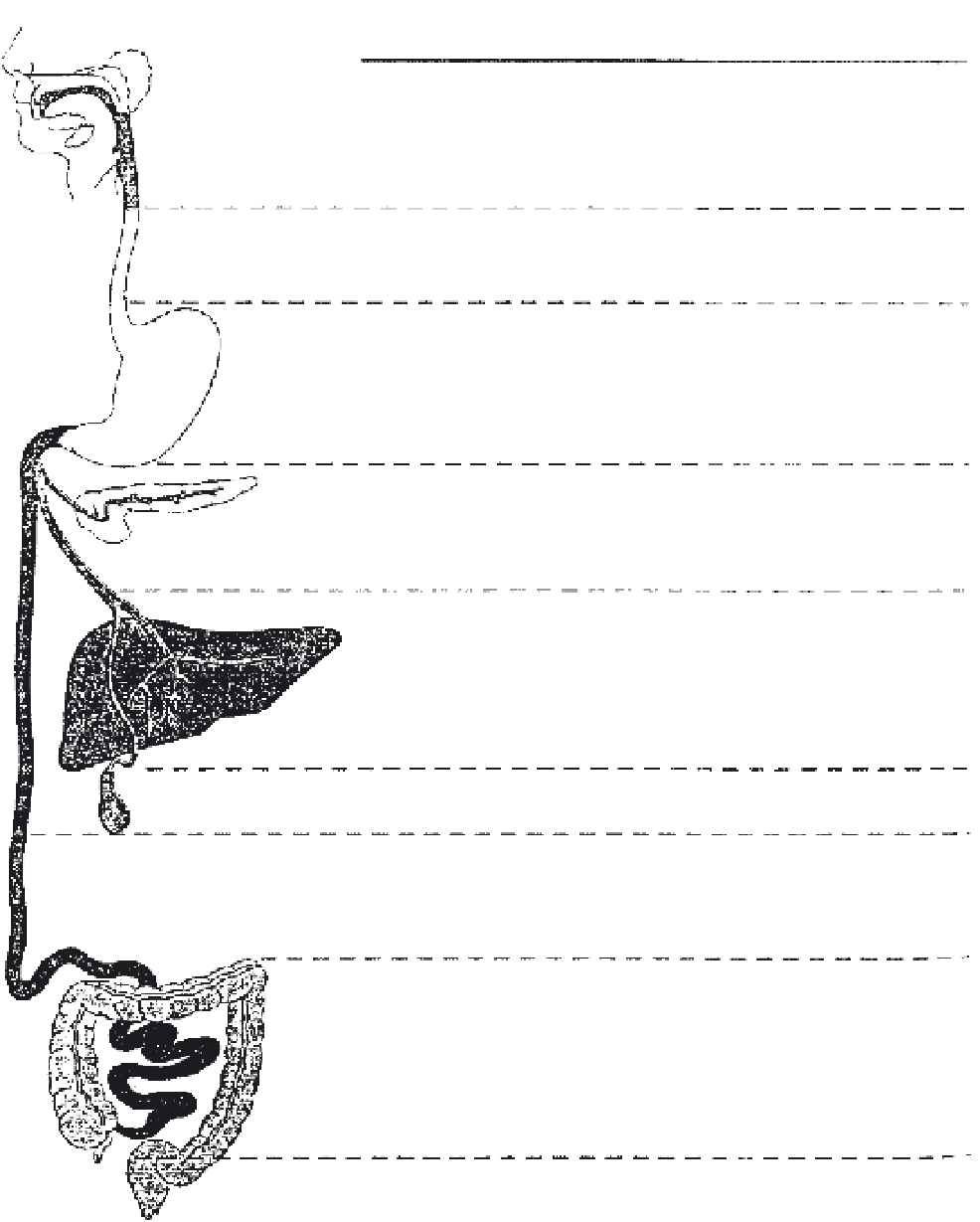Biomedical Engineering Reference
In-Depth Information
EXOCRINE
SECRETIONS
ORGAN
FUNCTIONS
Mouth and
pharynx
Salivary glands
Chewing (mechanical digestion);
initiation of swallowing reflex
Moisten food
Lubrication
Polysaccharide-digesting enzyme
Salt and water
Mucus
Amylase
Esophagus
Move food to stomach by peristaltic waves
Lubrication
Mucus
Stomach
Store, mix, dissolve and begin digestion
of food; regulate emptying of dissolved
food into small intestine
Solubilization of food particles: kill microbes
Protein-digesting enzyme
Lubricate and protect epithelial surface
HCI
Pepsin
Mucus
Pancreas
Secretion of enzymes and bicarbonate:
also has nondigestive endocrine functions
Enzymes
Digest carbohydrates, fats, proteins, and
nucieic acids
Neutralize HCI entering small intestine
from stomach
Bicarbonate
Secretion of bile; many other nondigestive
functions
Liver
Bile salts
Bicarbonate
Solubilize water-insoluble fats
Neutralize HCI entering small intestine
from stomach
Elimination in feces
Organic waste
products and
trace metals
Gallbladder
Store and concentrate bile between meals
Small intestine
Digestion and absorption of most substances:
mixing and propulsion of contents
Food digestion
Maintain fluidity of luminal contents
Lubrication
Enzymes
Salt and water
Mucus
Large intestine
(colon)
Storage and concentration of undigested
matter: mixing and propulsion of contents
Mucus
Lubrication
Rectum
Defecation
FIGURE 6.21
Functions and organization of the gastrointestinal organs.
From [17].

